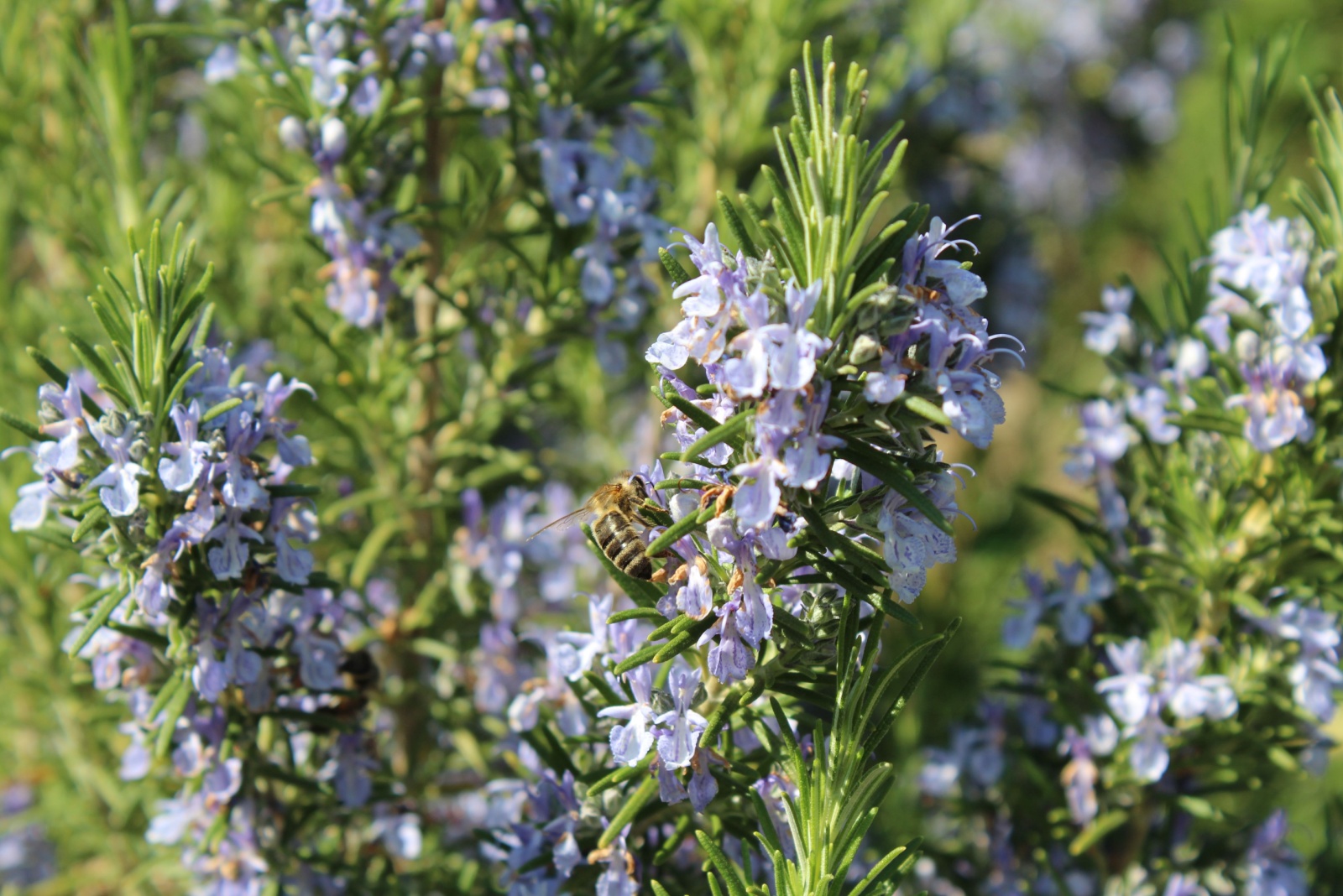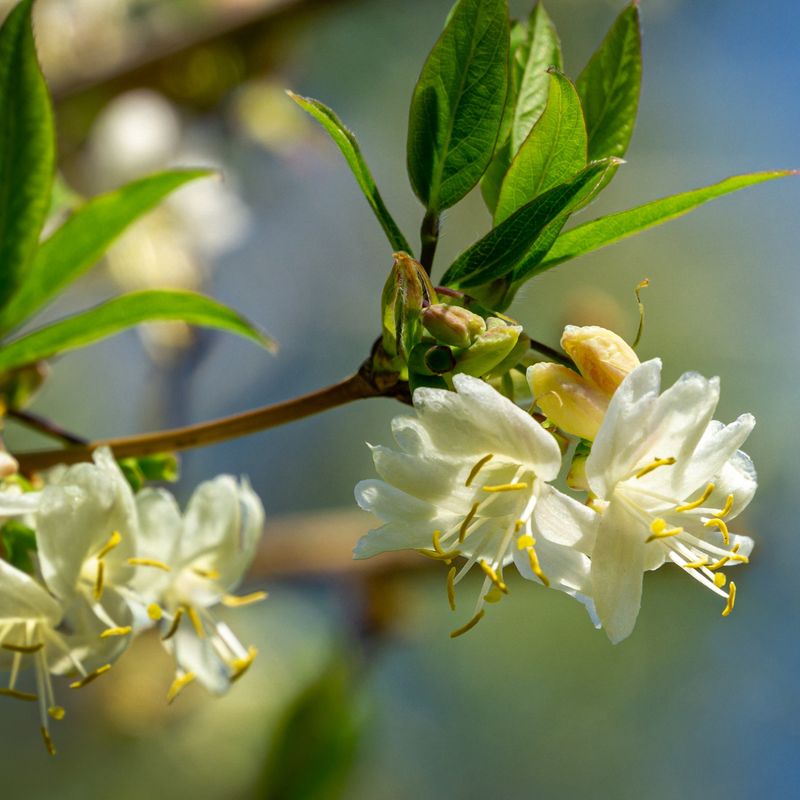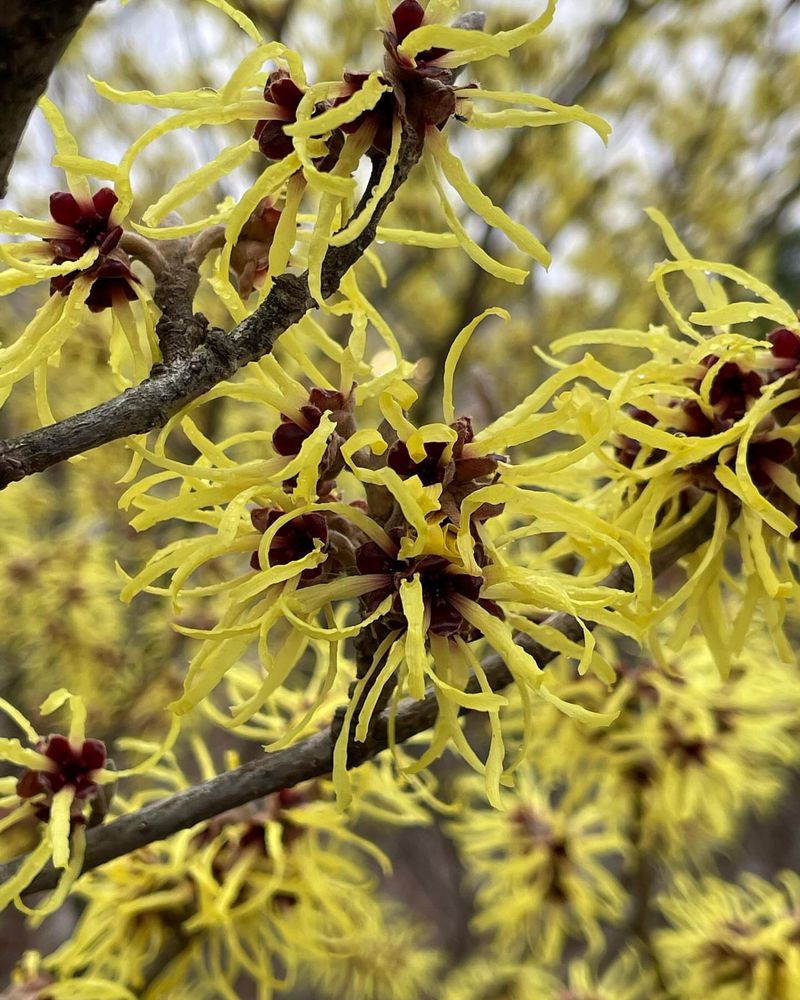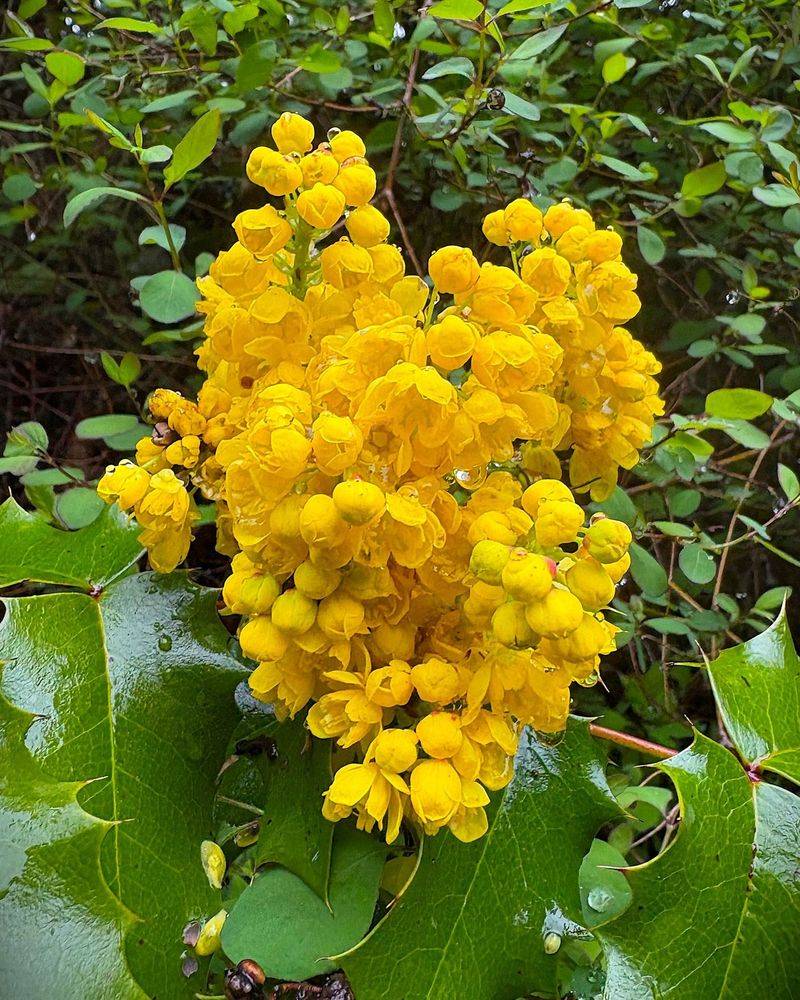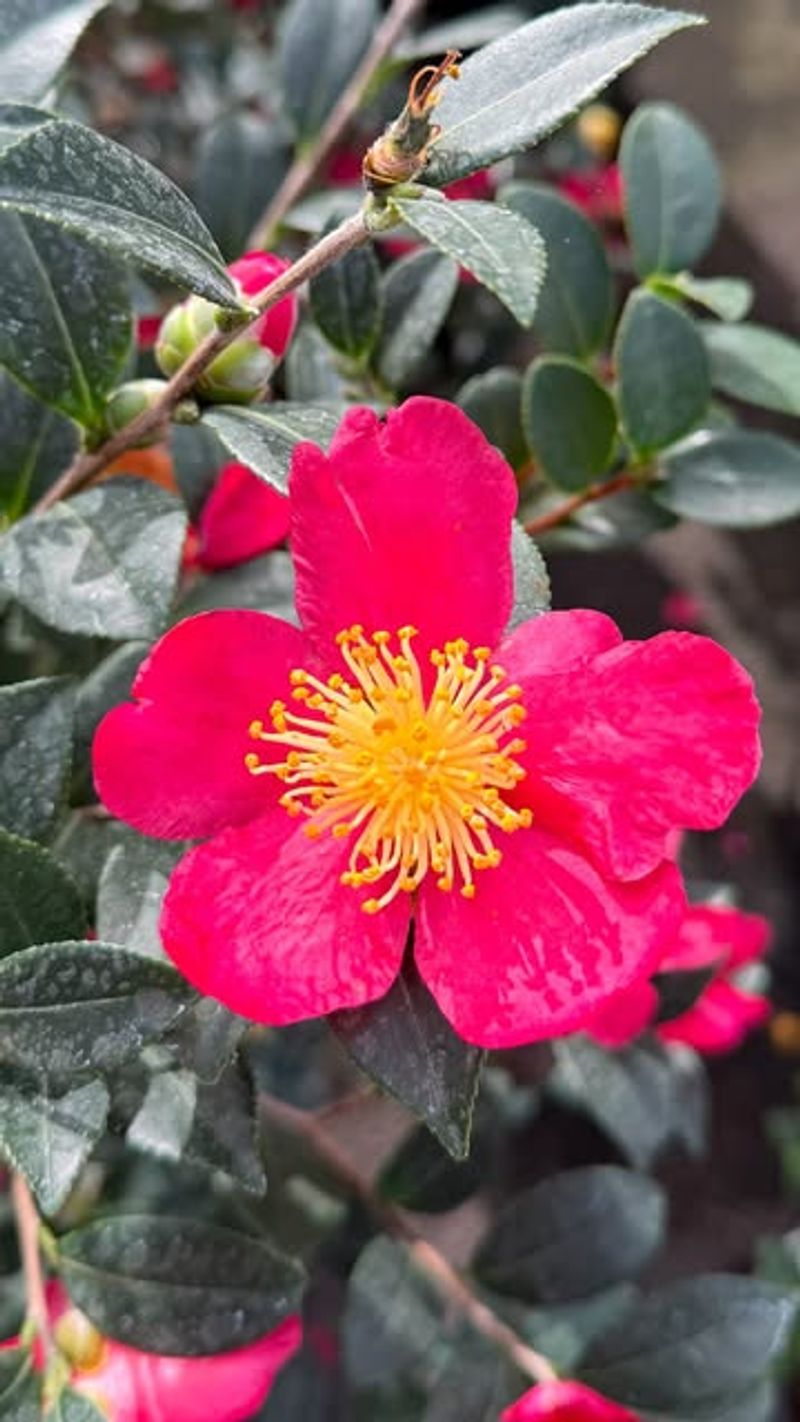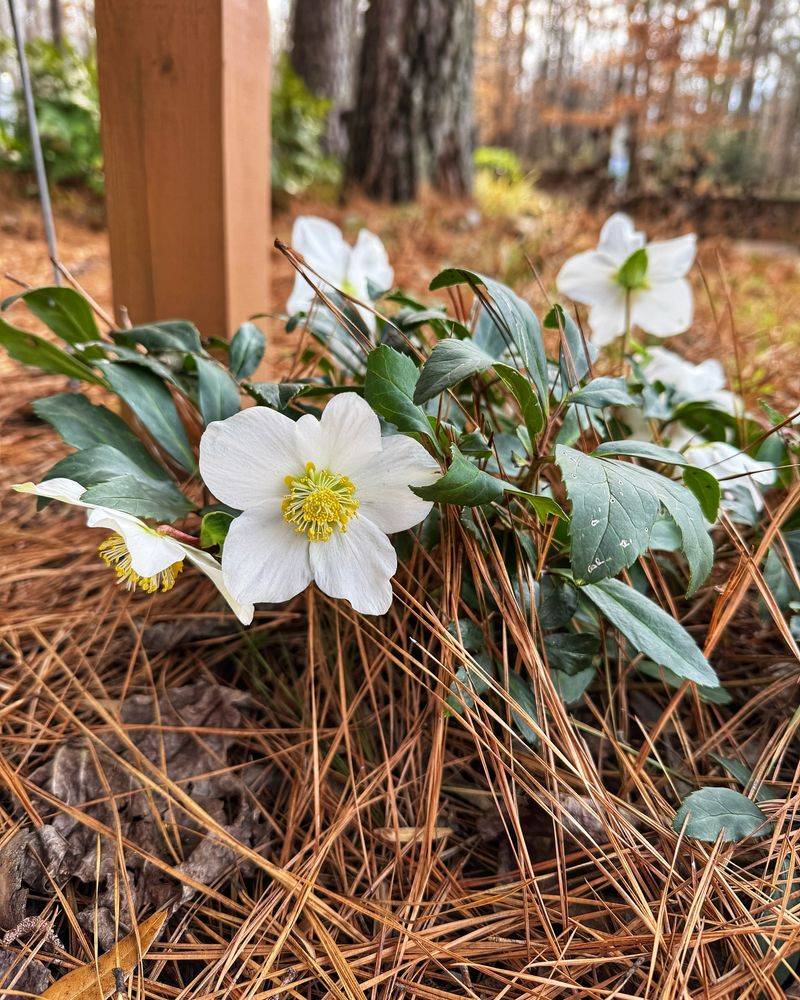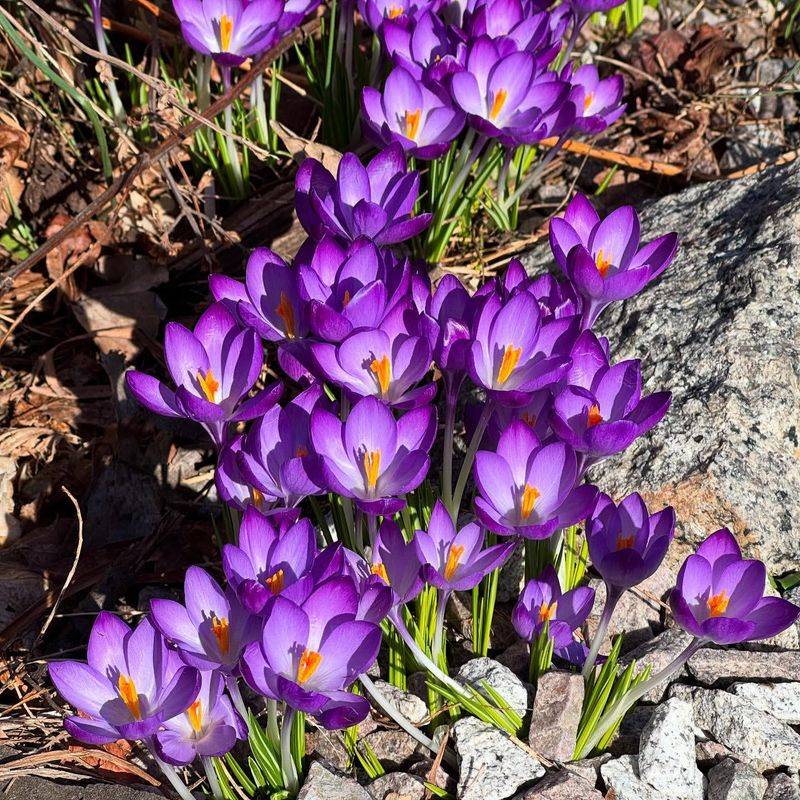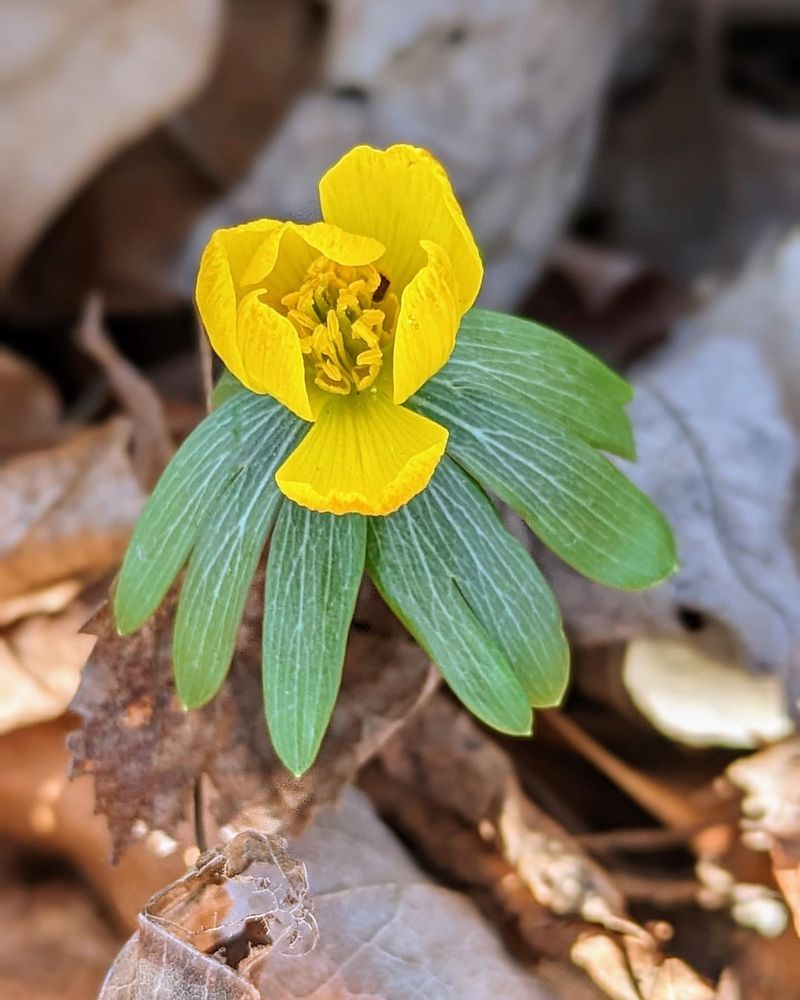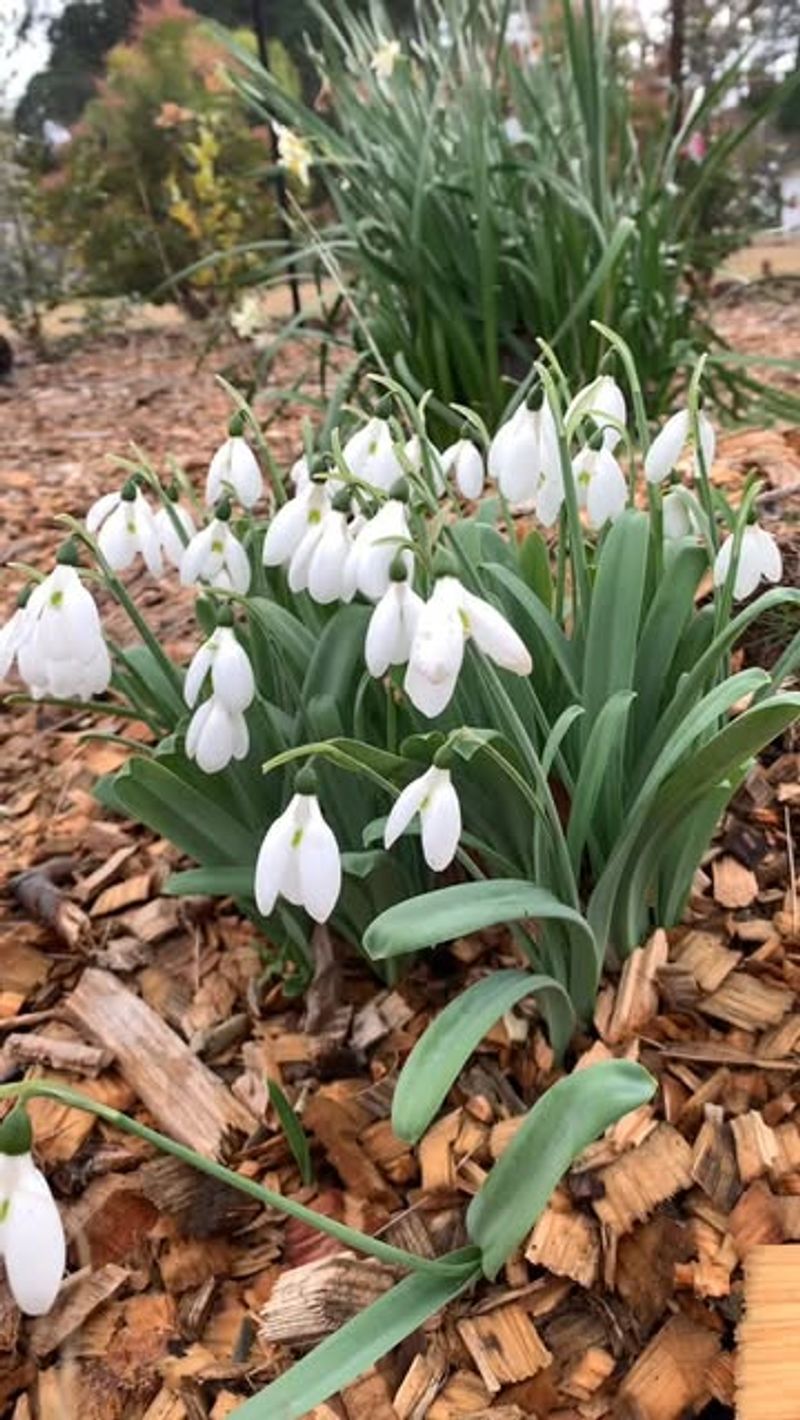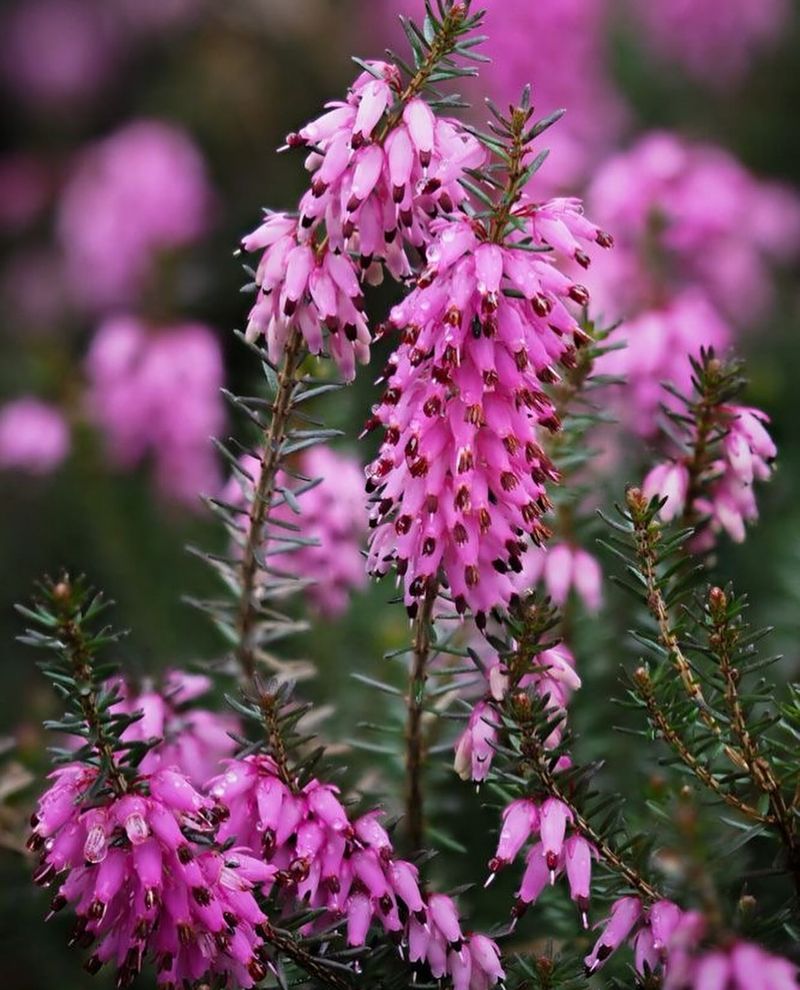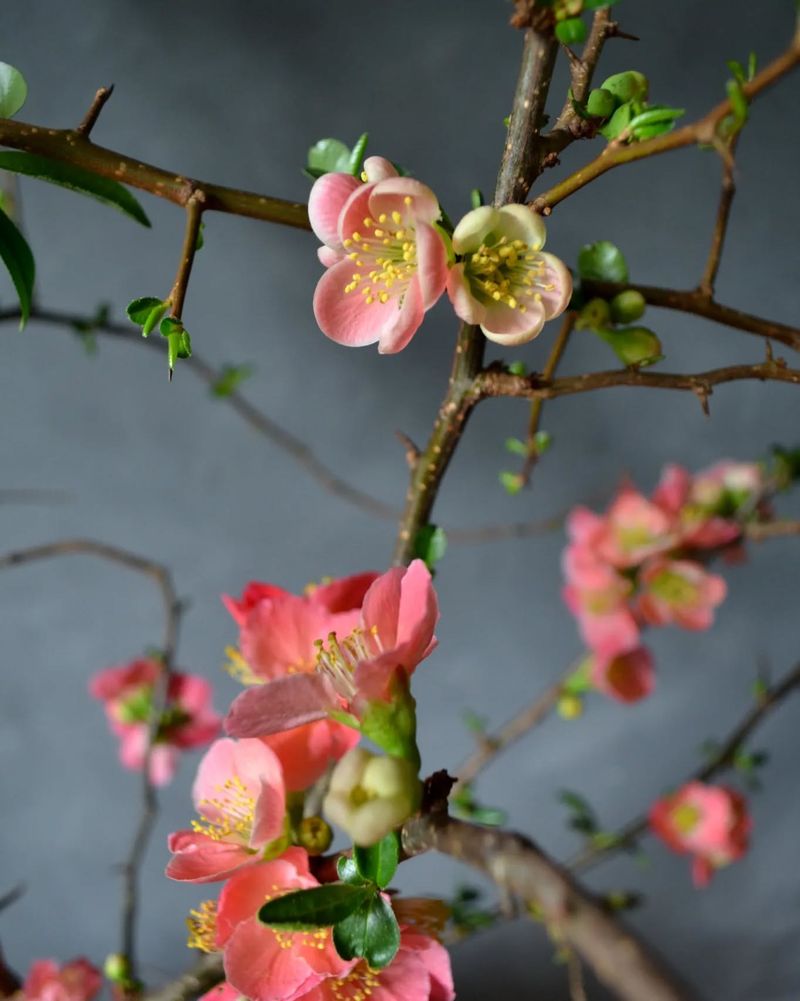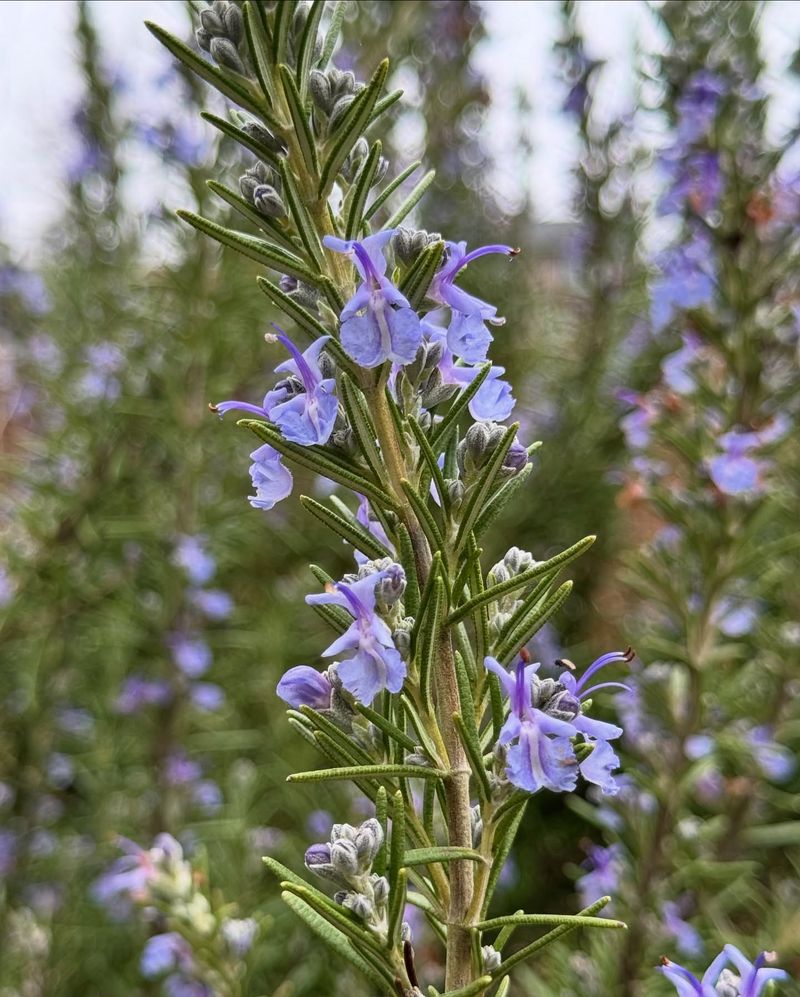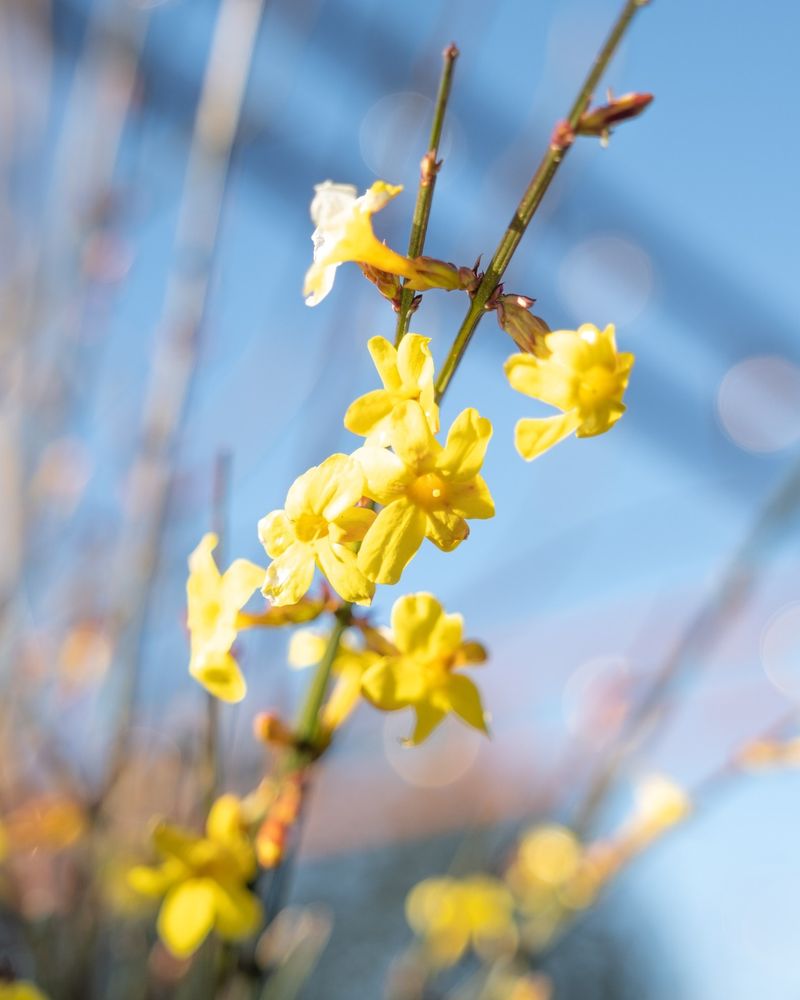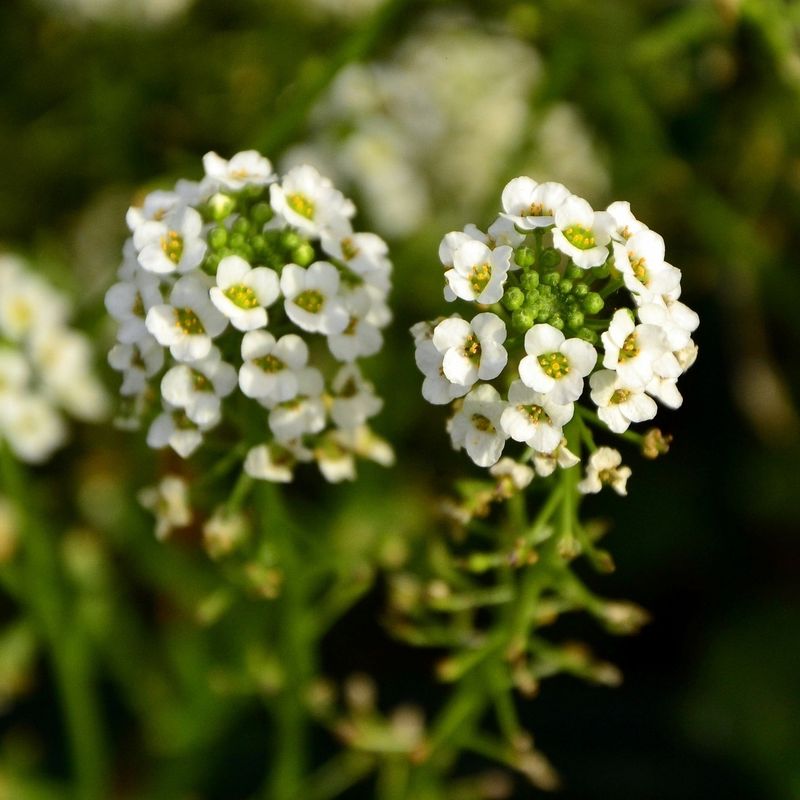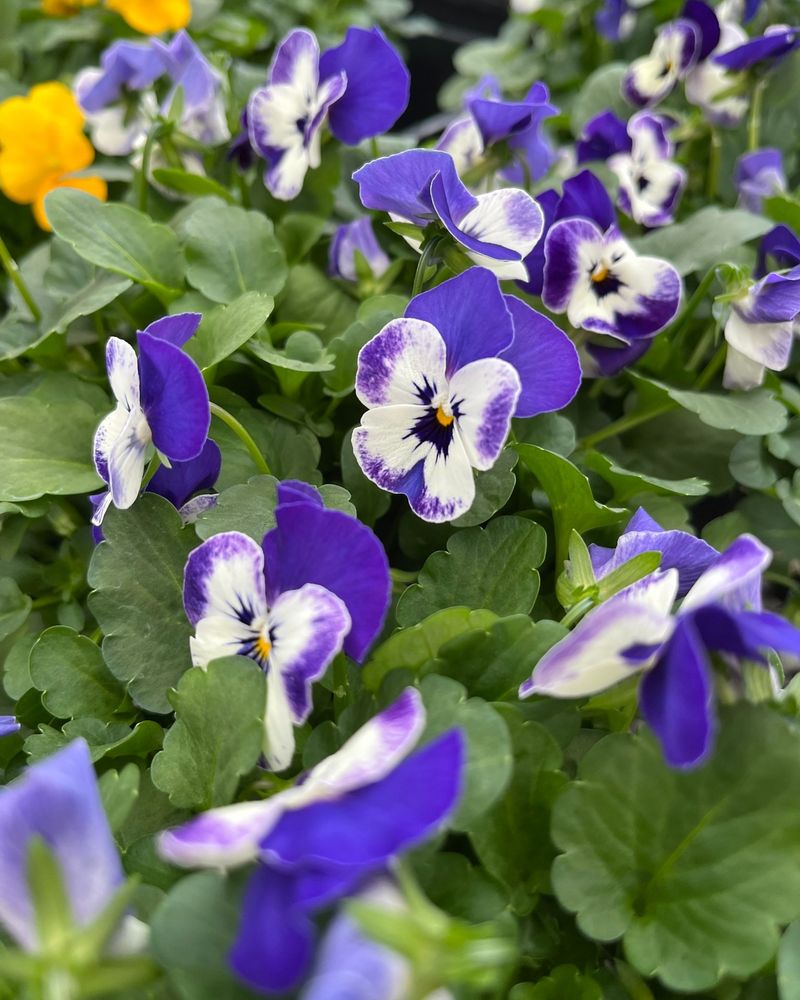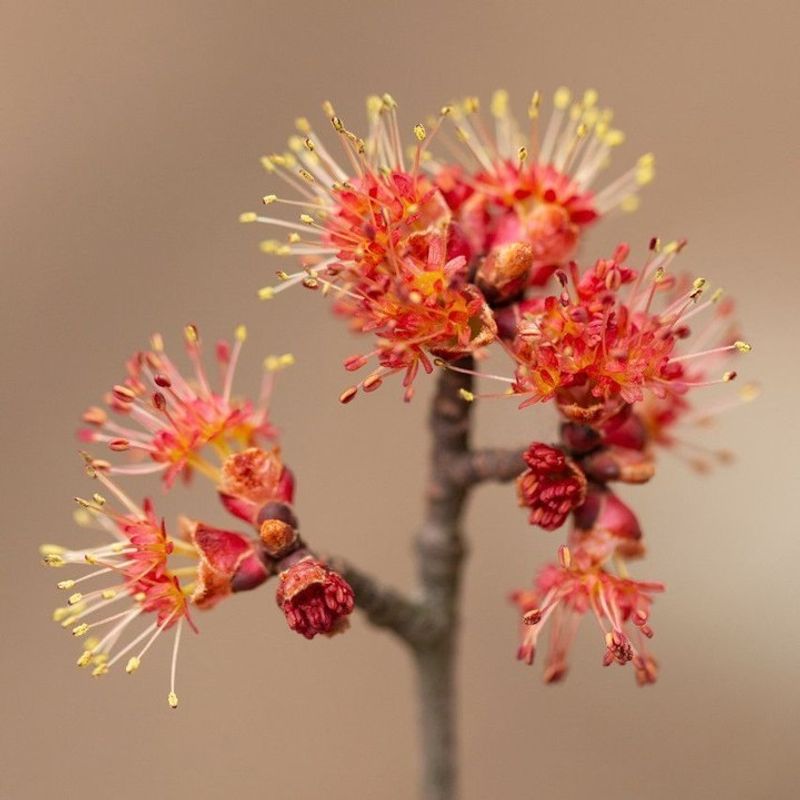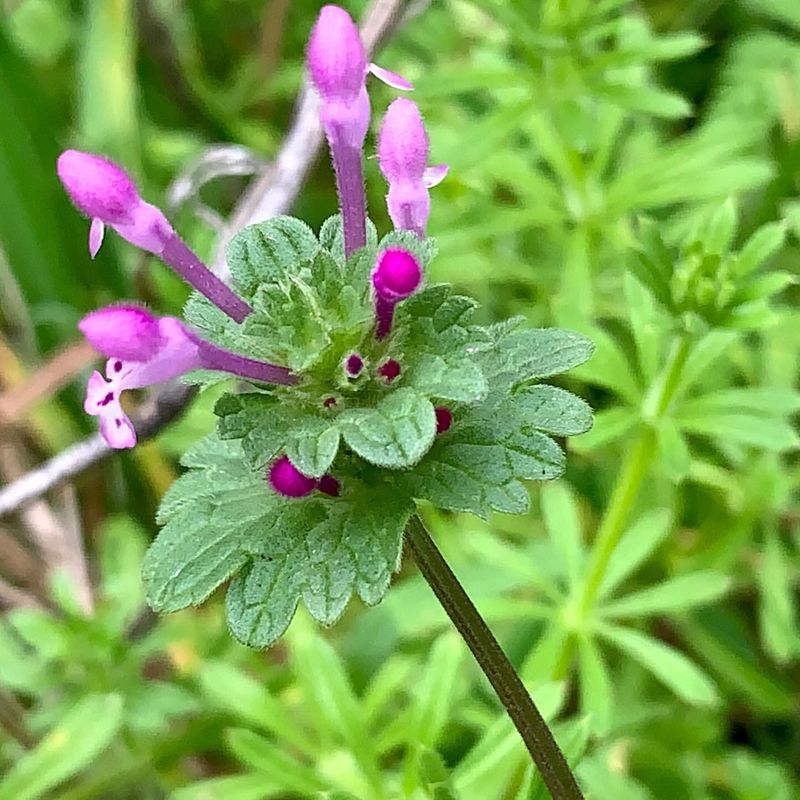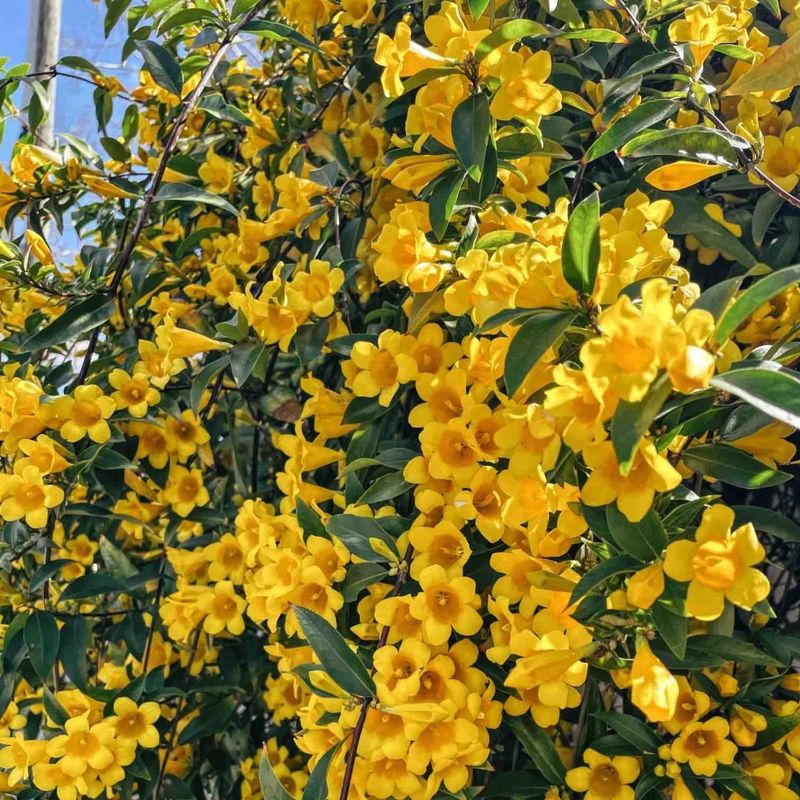North Carolina winters can be tricky for our buzzing friends, with temperatures that swing between mild days and frosty nights. Many gardeners don’t realize that bees remain active during warmer winter spells, desperately searching for food when most plants have gone dormant.
In my years of tending gardens across the Piedmont region, I’ve discovered that planting the right winter-blooming varieties makes all the difference. The soft hum of bees on a January afternoon feels like a small victory against the season.
Adding just a few of these easy-growing plants to your landscape creates a lifeline for local pollinators. Even on the chilliest Blue Ridge mornings or coastal Carolina winter days, these hardy options provide the nectar and pollen bees need to survive until spring.
1. Winter Honeysuckle
The sweet lemony scent drifts across my garden on mild January days, drawing in every honeybee within flight range. Unlike its invasive summer cousin, this well-behaved shrub stays put while offering crucial winter nectar.
Planted near a south-facing wall in North Carolina gardens, winter honeysuckle often blooms from December through March. The tiny cream flowers might not look impressive to us, but they’re treasure troves for hungry bees.
Once established, this drought-tolerant shrub needs almost no care, making it perfect for busy gardeners. Just give it full sun to part shade and watch the pollinators arrive.
2. Witch Hazel
Spider-like yellow blooms appear on bare branches right when most North Carolina gardens look their bleakest. I’ve watched native bees flock to my witch hazel on sunny February afternoons when temperatures climb above 55°F.
This native understory tree fits perfectly in woodland gardens or as a specimen plant. The spicy fragrance serves as a beacon to pollinators, while the unusual flowers add winter interest for human eyes too.
Hardy throughout all NC growing zones, witch hazel asks for little beyond occasional watering during establishment. The fall foliage bonus—brilliant gold that glows against autumn skies—makes this multi-season performer unbeatable.
3. Mahonia (Oregon Grape)
Bright yellow flower spikes stand tall against spiky evergreen foliage, creating a dramatic winter focal point. During my walks through Duke Gardens in Durham, I’ve noticed these architectural plants buzzing with bee activity even in December.
Mahonia thrives in the dappled shade that dominates many North Carolina woodland gardens. The blooms typically appear from November through March, providing a reliable food source when little else flowers.
After pollination, blue-black berries develop that attract birds, creating a wildlife-friendly corner of your garden. This drought-tolerant plant stands up to our unpredictable winters without complaint.
4. Camellias For Midwinter Magic
Walking through my grandmother’s Raleigh garden in January always meant finding bees nestled in camellia blooms. These Southern classics provide both pollen and a sheltered spot where bees can warm themselves on chilly days.
Fall-blooming sasanqua varieties start the show in November, while japonica types carry the torch through February and March. The single-flowered varieties offer the most accessible pollen—double forms look stunning but provide less bee food.
Plant camellias where they’ll get morning sun but afternoon shade in summer. Their glossy evergreen leaves look good year-round, making them workhorses in the Carolina landscape.
5. Hellebores (Lenten Rose)
Nodding flowers in shades from pure white to deep purple emerge from beneath snow in my Chapel Hill garden. Hellebores have become my reliable February friends, feeding the earliest bees when winter seems endless.
These tough perennials laugh at North Carolina’s occasional ice storms and bounce back unscathed. The downward-facing blooms protect pollen from rain and snow, ensuring bees find food even in challenging conditions.
Plant them in woodland edges where deciduous trees provide summer shade but winter sun. Once established, they’ll form clumps that can be divided every few years, spreading winter joy throughout your garden.
6. Crocus: First Sign Of Hope
Nothing signals winter’s retreat like finding bumblebee queens wobbling among purple crocus blooms. These tiny bulbs punch above their weight in wildlife value, often providing the first substantial meal for bees emerging from hibernation.
In my Winston-Salem neighborhood, south-facing slopes burst with crocus color by late January in mild years. The open, bowl-shaped flowers serve as solar collectors, warming both the bloom and any bee visitors.
Plant crocuses by the hundreds in lawn areas for a meadow effect, or tuck them into perennial beds where they’ll emerge before other plants leaf out. They multiply year after year with zero effort.
7. Winter Aconite’s Golden Glow
Buttercup-yellow flowers hug the ground in February, creating pools of sunshine after winter’s gray days. I’ve added these tiny bulbs beneath deciduous trees throughout my Asheville garden, where they spread into cheerful colonies.
Winter aconite often blooms alongside snowdrops in North Carolina’s mountain regions, sometimes pushing through light snow. Their wide-open flowers provide easy access for cold-slowed bees searching for early-season energy.
Each bloom lasts just a few days, but the display continues for weeks as new buds open. After flowering, the attractive foliage persists briefly before disappearing until the following winter.
8. Snowdrops: Delicate Yet Tough
These nodding white bells emerge while frost still grips my Charlotte garden, sometimes as early as January. Despite their fragile appearance, snowdrops handle North Carolina’s temperature swings with remarkable resilience.
Watching native bees navigate these tiny blooms always fills me with wonder. The flowers contain both nectar and pollen, providing complete nutrition when few other options exist.
Plant snowdrops near paths or entryways where you’ll notice their subtle beauty. They naturalize readily in woodland settings, forming expanding colonies that require no maintenance beyond occasional division when clumps become crowded.
9. Heath And Heather
Low-growing carpets of tiny bell flowers in pink, purple, and white brighten the dreariest February days. During winter hikes through the North Carolina mountains, I’ve spotted native bees working these flowers even with snow on the ground.
Both heath (Erica) and heather (Calluna) thrive in our acidic Carolina soils, especially in the western regions. Their evergreen foliage provides year-round structure while the winter blooms feed pollinators.
Success depends on well-drained soil and protection from harsh afternoon sun. Once established, these European natives handle our summer humidity better than you might expect.
10. Winter-Flowering Quince
Branches studded with salmon-pink blooms create a striking silhouette against winter skies. My grandmother’s coastal Carolina garden featured a massive specimen that hummed with bee activity every February.
Unlike its larger fruiting cousin, winter-flowering quince (Chaenomeles) stays compact enough for small gardens. The early blooms provide copious nectar during critical late-winter weeks when food remains scarce.
This tough shrub handles North Carolina’s clay soils without complaint. Plant it where you can enjoy the cut branches indoors too—they force beautifully in a vase, bringing spring inside during winter’s final weeks.
11. Rosemary: Herb With Benefits
Most North Carolinians grow rosemary for cooking, not realizing it’s also a winter bee magnet. In my Wilmington garden, its pale blue flowers often appear by Christmas and continue through March, drawing in honeybees on every mild day.
This Mediterranean herb thrives in our state’s hot summers and relatively mild winters, especially in coastal areas. The upright varieties work best as landscape plants, creating informal hedges that serve both kitchen and wildlife.
Plant rosemary in full sun with excellent drainage—raised beds or slopes work perfectly. Once established, it needs almost no supplemental water, making it ideal for busy or conservation-minded gardeners.
12. Winter Jasmine’s Sunny Disposition
Arching stems covered with bright yellow stars brighten the bleakest February corners. Though not fragrant like its summer relatives, winter jasmine makes up for it with weeks of cheerful blooms that sustain North Carolina’s early-emerging bees.
I’ve trained this semi-vining shrub along my Durham garden fence, creating a fountain of color visible from kitchen windows. Its flexible stems root where they touch soil, allowing for easy propagation.
This adaptable plant handles both the red clay of the Piedmont and the sandy soils of our coast. Prune immediately after flowering to maintain a tidy shape and encourage next year’s blooms.
13. Sweet Alyssum For Mild Winters
This low-growing annual often survives Carolina’s coastal and Piedmont winters, continuing to bloom when temperatures stay above freezing. The tiny white, pink, or purple flowers don’t look like much individually, but together they create a fragrant carpet bees can’t resist.
In my Greenville garden, sweet alyssum self-seeds readily, returning year after year without effort. The honey-scented blooms attract the smallest native bees, which are often overlooked but vitally important pollinators.
Plant alyssum in fall for winter blooms, choosing sunny spots protected from harsh winds. It pairs beautifully with winter vegetables, attracting beneficial insects that help control garden pests.
14. Pansies And Violas: Winter Workhorses
These cheerful faces aren’t just for show—they’re serious bee food throughout North Carolina’s milder winter days. I’ve watched countless honeybees gather pollen from the center of these blooms, their leg baskets filling with golden treasure.
Plant them in October for the longest bloom season. Choose single varieties rather than doubles for better pollinator access. The smaller-flowered violas typically weather freezes better than their larger pansy cousins.
Both recover quickly after hard freezes, making them reliable performers across all Carolina growing zones. Group them in containers or beds where their bright colors can lift winter spirits—both human and bee!
15. Red Maple: First Native Tree To Bloom
Tiny red flowers appear on bare branches as early as January in eastern North Carolina, signaling the start of tree pollination season. Though often overlooked, these modest blooms provide crucial early-season pollen for native bees emerging from winter rest.
Walking through my neighborhood after January rain showers, I’ve noticed sidewalks stained red from fallen maple flowers. Look up on those days and you’ll likely spot bees working the canopy, gathering protein-rich pollen.
No need to plant this one—red maples grow throughout our state. But consider preserving existing trees when developing your property, recognizing their ecological value beyond summer shade.
16. Henbit And Dead Nettle
Those purple-flowered “weeds” in your winter lawn actually serve as critical bee forage. During February walks through my Greensboro neighborhood, I often spot bumblebees visiting henbit patches in sunny lawn areas.
These European natives have naturalized throughout North Carolina, blooming from late winter through spring. The tubular flowers are perfectly shaped for long-tongued bees, providing both nectar and pollen when little else blooms.
Consider leaving patches in unused areas of your yard, or delay mowing until spring plants emerge. What some see as weeds, bees recognize as survival food during the hunger gap.
17. Winter-Blooming Clematis
Bell-shaped white flowers dangle from evergreen vines in my protected Raleigh courtyard, surprising visitors who think clematis only blooms in summer. Clematis armandii and C. cirrhosa varieties flower from late winter into early spring, providing nectar during February’s lean times.
These aren’t the easiest plants on our list—they need sheltered locations in all but the mildest parts of North Carolina. A south-facing wall offers ideal protection from harsh winter winds while maximizing warming sunshine.
The fragrant blooms attract diverse pollinators, from honeybees to native bees. Their evergreen foliage provides year-round screening, making them perfect for privacy plantings with ecological benefits.
18. Carolina Jessamine
Golden trumpets cover this native vine by February in southern parts of our state. Though toxic to honeybees in large quantities, Carolina jessamine provides safe nectar for many native bees and serves as a crucial late-winter food bridge.
Growing wild throughout North Carolina’s coastal plain and piedmont, this vigorous climber transforms fences and arbors with its cheerful blooms. The sweet fragrance carries on mild winter breezes, guiding bees to its nectar.
In my Fayetteville garden, I’ve trained jessamine along a split-rail fence, creating a wildlife-friendly boundary. The evergreen foliage provides year-round interest, while the early flowers announce spring’s approach.

